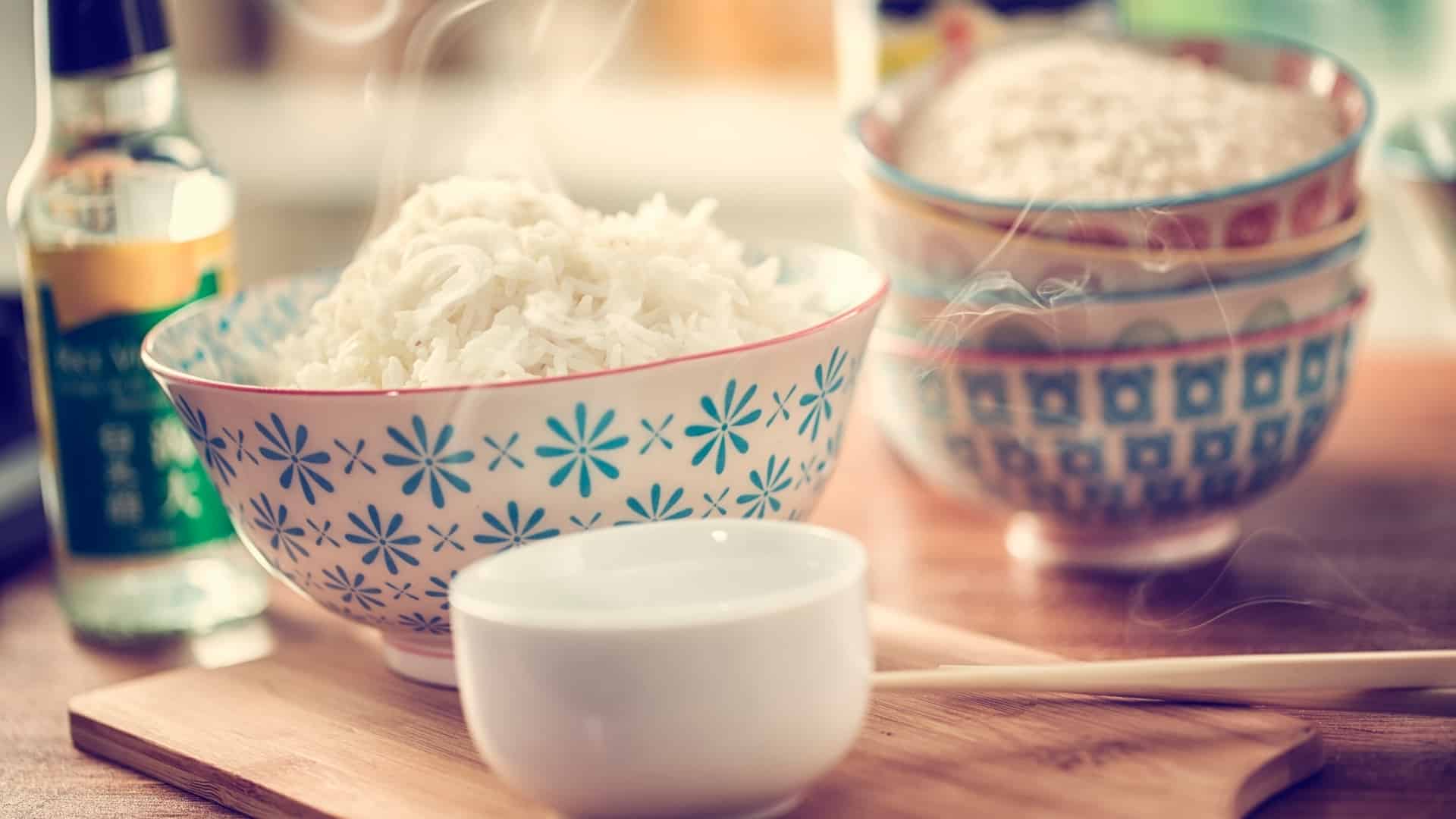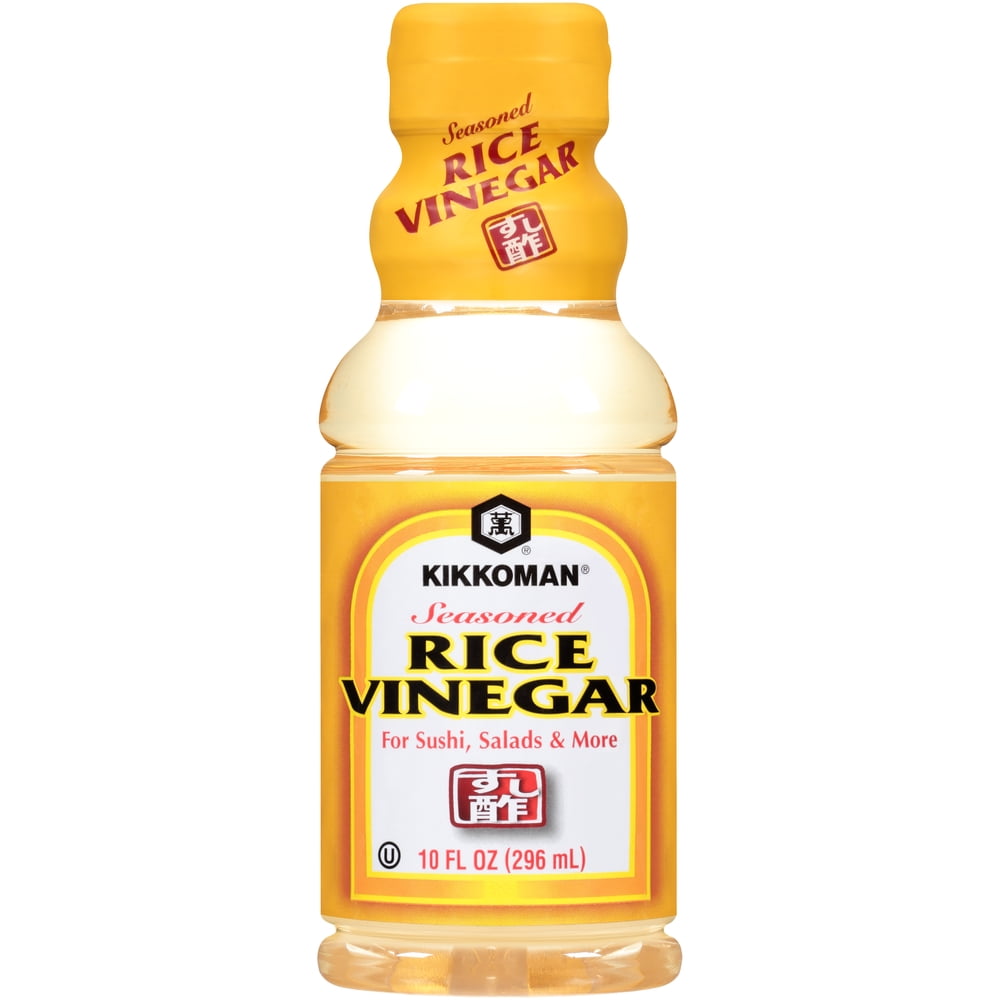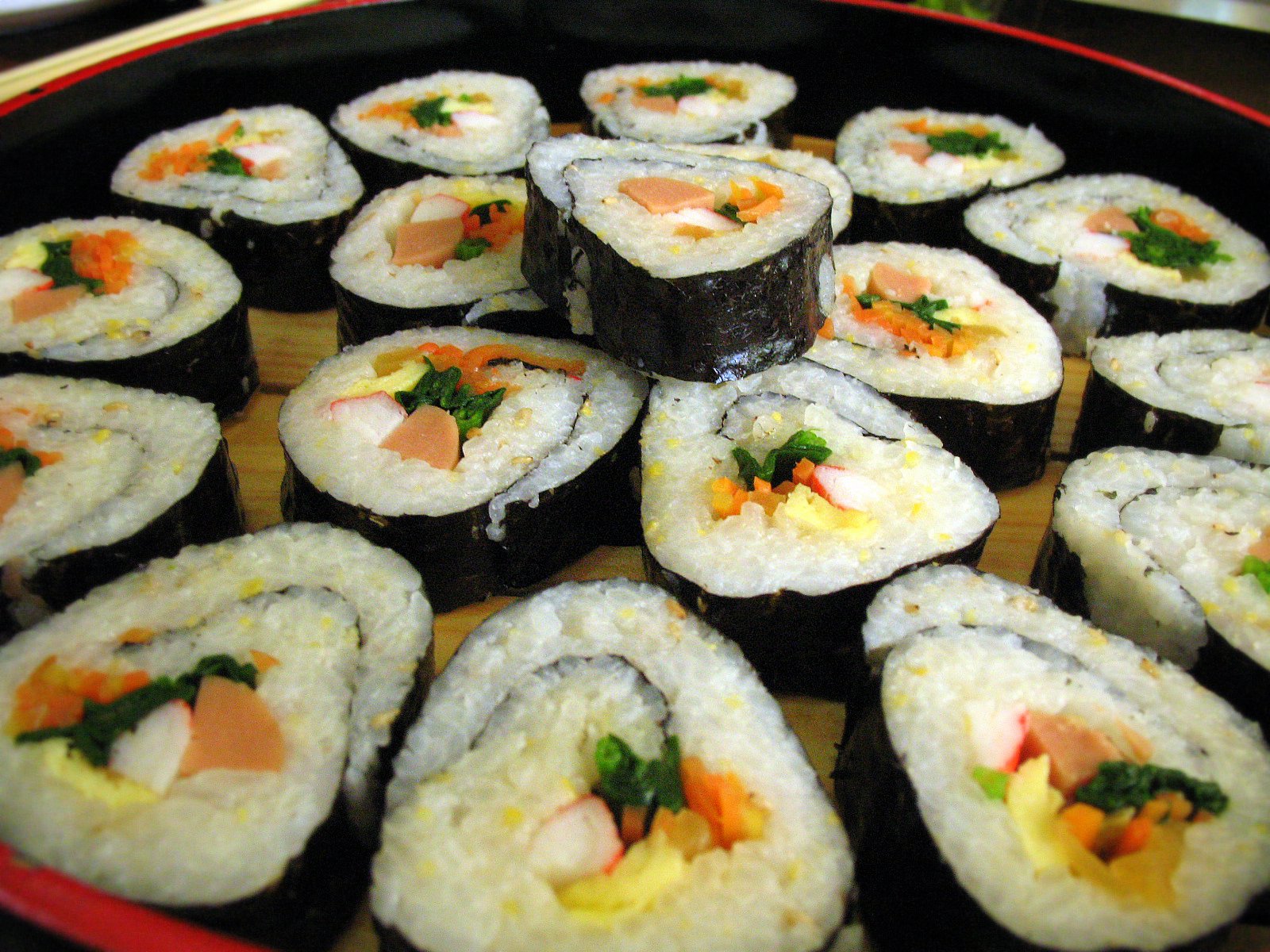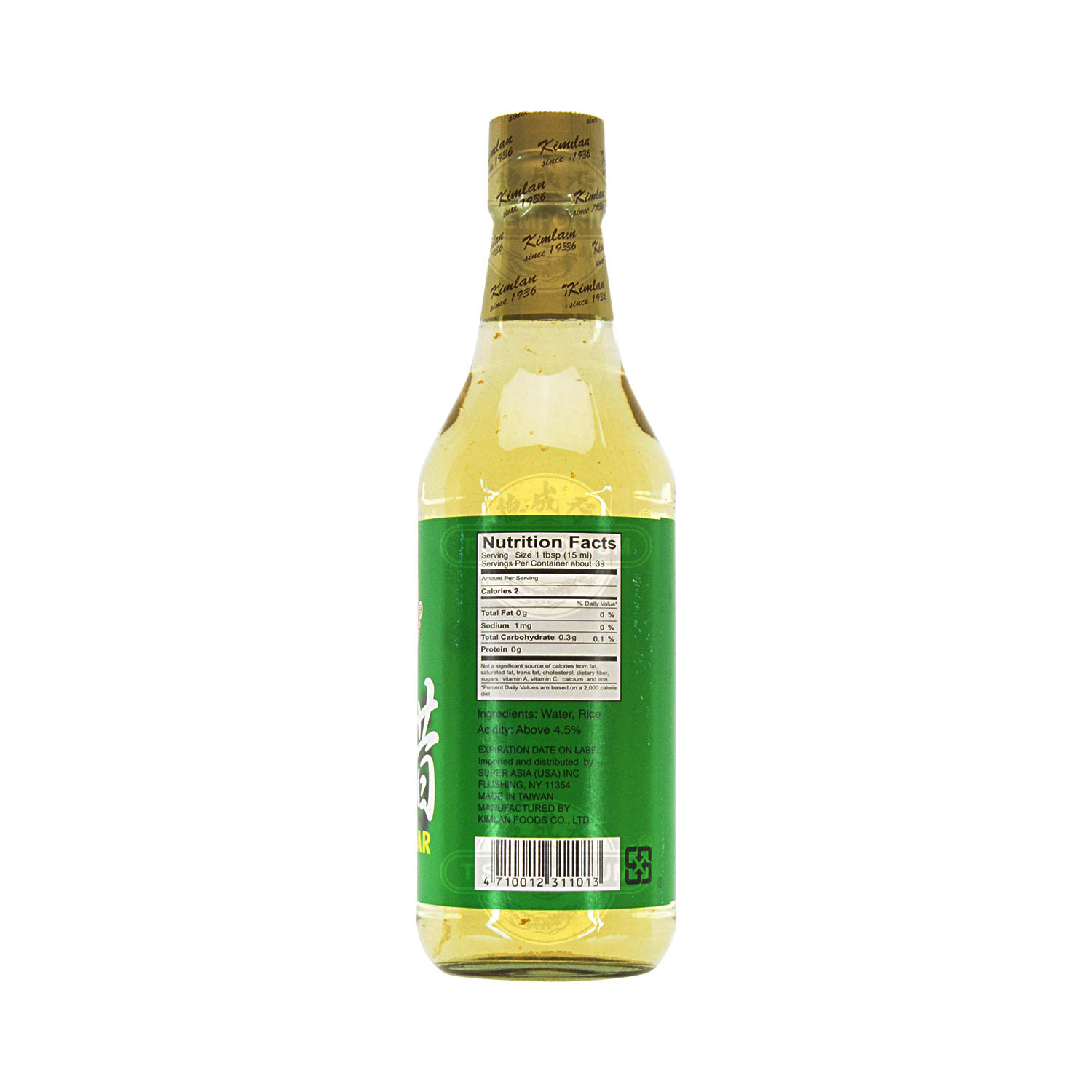
Ottogi Korean Rice Vinegar or Brown Rice Vinegar 500ml Shopee Philippines
Directions. In a medium saucepan, stir together water, vinegar, sugar, salt, garlic, turmeric, peppercorns, and bay leaves. Bring to a boil over medium-high heat, stirring to ensure that sugar fully dissolves. Remove from heat and add daikon. Press a paper towel directly against the surface of the brine and let cool to room temperature, 1 to 2.

OTTOGI Brown Rice Vinegar 900ml WaNaHong
Place the bamboo rolling mat on a flat surface with the long side nearest you (the bamboo sticks should be horizontal). Lay out the seaweed sheets, a plate or tray with fillings, and a small bowl of warm water. Also designate a place to put your finished rolls. Position the seaweed on top of the bamboo mat.

Sushi Vinegar vs Rice Vinegar What's the Difference? Let's Have a Look
Slice cucumbers into thin slices. Around 1/8 inch (3 mm). whole Japanese cucumber. Cucumber slices for Oi Muchim (Korean cucumber salad or side dish) Mix soy sauce, vinegar and sugar in a bowl. Pour soy vinegar into the bowl with cucumbers. Then, add 1/2 tsp chili powder and sesame seeds. Mix and taste.

Chungjungwon Brown Rice Vinegar 500ml SIJANG MART 1 Online Korean
Types of Korean Vinegar Grain Vinegars. Rice Vinegar (ssalcho): A mild and slightly sweet vinegar made from fermented rice. It is commonly used in dipping sauces, marinades, and dressings. Brown Rice Vinegar (hyunmi cho): Similar to rice vinegar, but with a richer flavor due to the use of brown rice. It is often used in braising and stir-frying.

Daesang Brown Rice Vinegar 500ml Rice vinegar, Brown rice, Vinegar
How to Make Korean Cucumber Salad. Assemble your ingredients. For exact amounts see the recipe card below. Add the cucumbers into a large bowl and coat in the rice wine vinegar and sea salt. Mix it together and let it marinate in the fridge for 30 minutes. While it is marinating, prepare the dressing by mixing all ingredients together in a.

Pure Premium Rice Vinegar 500ml The Japanese Pantry
2 tablespoons rice wine or sake; 2 tablespoons lemon juice; 2 tablespoons rice vinegar; 1 tablespoon toasted sesame oil; pinch of salt and black pepper; 1 tablespoon toasted sesame seeds (I've also used 1 tablespoon of Asian-style Sprinkle from Savory Spice Shop, if I don't have sesame seeds on hand.)

Organic Brown Rice Vinegar 270ml China ZENXIN
Like Italian balsamic vinegar. But it was very thin texture, so I had to boil down to a proper consistency to use for salad. In a small sauce pan, put 1/2 cup of the Korean Drinking Vinegar; bring to boil and reduce heat to medium and simmer for 10 to 15 minutes or until thickened. Like syrupy texture.

Rice Vinegar Marukan
These Korean Beef Bowls are so easy and quick to make!. Rice Vinegar - Rice vinegar is more subtle in tanginess than traditional white vinegar so only use 1 teaspoon if you aren't using rice vinegar. Salt & Sesame Seeds; Bowls. Lean Ground Beef - Feel free to use the protein you like best. Ground chicken, ground turkey, and crumbled.

Korean Berry Drinking Rice Vinegar Seonkyoung Longest
Instructions. Combine the soy sauce, light brown sugar, 1 cup water, soju, gochujang, honey, rice wine vinegar, garlic, ginger root, sliced scallions, grated pear, black pepper, and chili powder in a large stainless pot. Stir while bringing to a boil. Boil for 5 minutes, stirring frequently.

Kikkoman Rice Vinegar, 10 Fz
Instructions. In a small bowl, whisk together the gochujang paste, vinegar, sesame oil, and maple syrup. Use less gochujang paste for a mild sauce, use more for a spicier sauce. Spoon onto bibimbap bowls, or use as a dressing for any veggie rice bowl.

FileKorean.foodKimbap03.jpg Wikipedia
Korean rice vinegar. Rice vinegar is a vinegar made from fermented rice in East Asia (China, Japan and Korea), as well as in Vietnam in Southeast Asia. It is used as a seasoning, dressing, and dipping in many dishes, including sushi, jiaozi, and banchans. Some of its variants are also a drink by themselves.

KIMLAN Rice Vinegar 20oz Tak Shing Hong
Lemon vinegar and apple vinegar are popular among Korean home cooks. If you don't have rice vinegar, you can use any clear vinegar such as white vinegar, apple cider vinegar, or Korean fruit flavored vinegar. Use: The vinegar is used in many Korean dishes. The flavor profile of sweet and sour is very common in spicy and non-spicy sauces and.

FileRice p1160004.jpg Wikipedia
Let stand at room temperature for 7 to 10 days or longer without exposure to sunlight. (See note 1) Bring the soy sauce, sugar and water a boil, and gently boil for a minute over medium heat. Pour in the vinegar. Drain the vinegar brine from the jar. Pour the soy brine, while still hot, over the garlic cloves.

Pin by Theresa Baker on Products I Love Rice vinegar, Homemade
Place the lemon juice, 1/4 cup soy sauce, 3 tablespoons packed light brown sugar, 2 tablespoons mirin, 1 tablespoon rice vinegar, and 1 teaspoon hondashi in a small bowl and whisk until the sugar and hondashi are dissolved.
:max_bytes(150000):strip_icc()/rice-vinegar-540015025-57d3097b3df78c5833456d98.jpg)
All About Chinese Rice Vinegar
Oi muchim (Korean Cucumber Salad) is a spicy korean cucumber salad made with cucumbers, gochugaru, soy sauce, rice vinegar, sugar, garlic, and toasted sesame seed oil. Similar to sunomono which is a Japanese cucumber salad that doesn't have any spiciness or chili flakes in it, Korean cucumber salad is light and refreshing with a sweet and tangy.

Mee Chun Red Rice Vinegar 500ml Regency Foods Wholesaler
This Korean salad dressing variation is a unique and flavorful option that uses green onions as the main ingredient. The dressing is made by blending green onions with rice vinegar, soy sauce, and sesame oil. The result is a tangy and slightly sweet dressing with a fresh and herbaceous flavor that pairs perfectly with fresh greens and grilled.